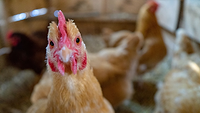Rising Campylobacter Infections From Poultry May Lead to Increasing AMR in U.S., Study Suggests

Image credit: tawatchai07 via Freepik
A recent study combining genomic data and machine learning has attributed the majority of U.S. campylobacteriosis cases to poultry, and found that chicken is an increasing source of multidrug-resistant Campylobacter in human infections.
Published in Journal of Infection, the study included genomic data for 8,856 C. jejuni and C. coli isolates from confirmed human clinical cases, collected by national and state laboratories between 2009 and 2019. The clinical data was contextualized against Campylobacter data gathered by national surveillance programs that sampled livestock and fecal matter at slaughter, animal food products and processing facilities, and poultry products at retail. The dataset was further supplemented by a previously published global collection of genomes from wild birds and environmental isolates.
Source attribution models and machine learning were applied to the genomic data to predict the most likely source for each human campylobacterosis cases. Nucleotide sequences for all genomes were also screened for the presence of known antimicrobial resistance (AMR) determinants.
Of the 8,856 isolates collected and sequenced from confirmed human campylobacteriosis cases between 2009–2019, 92 percent (8,160) were represented by C. jejuni, and the remaining 8 percent (696) were C. coli. Additionally, 16,703 isolates were collected and sequenced in national surveillance programs from possible Campylobacter infection sources (livestock, fecal, and product at processing and retail), 61 percent (10,146) of which were C. jejuni and 39 percent (6,557) of which were C. coli.
Comparison of clinical and source isolates linked the majority (68.1 percent) of human campylobacteriosis cases to chicken sources, followed by cattle sources (27.9 percent). Although only a small portion of overall human campylobacteriosis cases were attributable to pork sources, when looking only at C. coli infections, pork was responsible for 17.1 percent of cases.
The researchers also noted a steep increase in campylobacteriosis cases attributable to poultry sources—infections linked to poultry rose from 22.8 percent in 2009 to 71 percent in 2018.
Concerningly, the proportion of multidrug-resistant isolates rose from 12.3 percent in 2009 to 22.3 percent in 2018. This increase was specifically driven by a rise in fluroquinolone resistance in isolates that infect humans. Additionally, isolates belonging to poultry-associated lineages harbored the most AMR elements.
Therefore, the researchers caution that increasing campylobacteriosis cases attributed to poultry could increase AMR in human infections. The association of AMR with C. jejuni and C. coli isolates from poultry suggests that even in high-income countries such as the U.S., where AMR is perceived to be more stable, reducing infection from poultry will have a major impact in AMR mitigation.
Looking for a reprint of this article?
From high-res PDFs to custom plaques, order your copy today!







